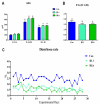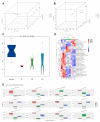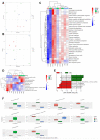Effects of Bacillus licheniformis on the Growth Performance, Antioxidant Capacity, Ileal Morphology, Intestinal Short Chain Fatty Acids, and Colonic Microflora in Piglets Challenged with Lipopolysaccharide
- PMID: 37443970
- PMCID: PMC10340043
- DOI: 10.3390/ani13132172
Effects of Bacillus licheniformis on the Growth Performance, Antioxidant Capacity, Ileal Morphology, Intestinal Short Chain Fatty Acids, and Colonic Microflora in Piglets Challenged with Lipopolysaccharide
Abstract
The aim of the present study was to investigate the effects of Bacillus licheniformis (BL) on the growth performance, antioxidant capacity, ileal morphology, intestinal fecal short-chain fatty acids, and microflora of weaned piglets challenged with lipopolysaccharide (LPS). Piglets were assigned into three groups: basal diet (Con), a basal diet with added 109 CFU B. licheniformis/kg (BLl), and a basal diet with added 1010 CFU B. licheniformis/kg (BLh). On day 28, BLh piglets were intraperitoneally injected with LPS (CBL) and sterilized saline water (BL), Con piglets were injected with LPS (LPS) and sterilized saline water (Con), with the injections being administered for three consecutive days. The average daily gain significantly increased from day 1 to day 28 and the feed: gain ratio decreased with BL supplementation compared with the Con group. Supplementation with BLl and BLh reduced the diarrhea rate in piglets. Serum catalase activity increased and malondialdehyde concentration decreased in the CBL treatment group compared with the LPS treatment group. Both BL and CBL treatments increased the ileal villus length/crypt depth ratio compared with Con and LPS treatments. BL administration significantly increased colonic propionic and isobutyric acid concentrations compared with Con treatment. Both BL and CBL piglets had significantly increased fecal acetic, propionic, and butyric acid levels compared with LPS piglets. Analysis of the colonic microbial metagenome showed that Prevotella species were the predominant bacteria in piglets treated with BL and CBL. The CBL-treated piglets had higher scores for lysine biosynthesis, arginine biosynthesis, sulfur relay system, and histidine metabolism. BL-treated piglets had higher scores for glycosaminoglycan biosynthesis-keratan sulfate, oxidative phosphorylation, and pyruvate and carbon metabolism.
Keywords: Bacillus licheniformis; colonic microflora; growth performance; lipopolysaccharide challenging; piglets.
Conflict of interest statement
We declare no financial or personal relationships with other people or organizations that might inappropriately influence our work, and we have no professional or personal interest in any product.
Figures










References
-
- Cao G., Tao F., Hu Y., Li Z., Zhang Y., Deng B., Zhan X. Positive effects of a Clostridium butyricum-based compound probiotic on growth performance, immune responses, intestinal morphology, hypothalamic neurotransmitters, and colonic microbiota in weaned piglets. Food Funct. 2019;10:2926–2934. doi: 10.1039/C8FO02370K. - DOI - PubMed
Grants and funding
LinkOut - more resources
Full Text Sources
Miscellaneous

